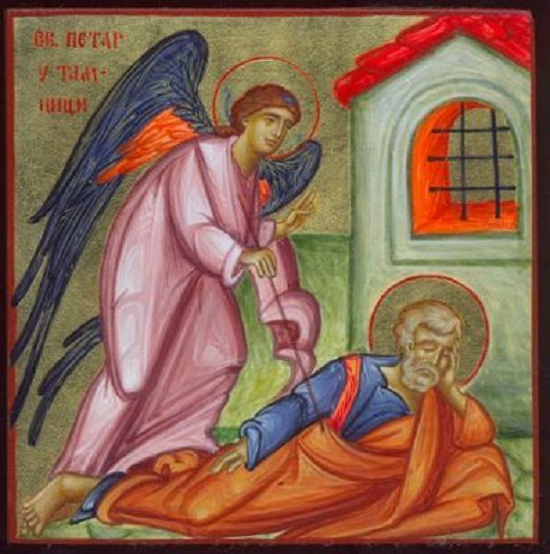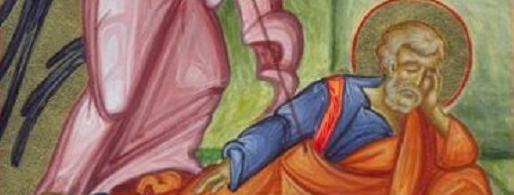The Marriage of Joseph and Mary
Fourth Sunday of Advent Scripture Readings

As a reflection on today’s gospel reading, let’s take this opportunity to talk about marriage. The understanding of marriage has been one of the hottest topics of the twenty-first century and has generated a huge amount of controversy and blather. We think our concept of marriage and the whole legal system supporting it goes back to the beginning but in fact, its origins can be found in Medieval Europe. The idea of marriage that arose when humans began creating customs, rituals, rules, and regulations was much broader and more fundamental than our understanding of it today. There are three common elements that everyone can agree on about marriage: property, family, and spirituality.
The first two—property and family—are inextricably entwined. We need to set aside for a moment the question of individual consent. Our beliefs about consent prevent us from seeing the deeper dynamics at work here. Individuals don’t marry, families do. You can’t establish a marriage bond between two people and not create bonds (for good or ill) with all their relations. Perhaps, if people understood that better today, it might avoid some problems. As a union of families, it only stands to reason that the heads of those families should come to an agreement. Their first concern would be an equitable distribution of goods and services between the families. This should not be mistaken for a market transaction. The true purpose of things like a dowry was to ensure that both families had what they needed to survive and be successful. The role of motherhood required a certain domesticity of the woman, so she was the one to leave her family and join her husband’s. That deprived her family of an important family member. The gifts exchanged between the man’s family and the woman’s sought to correct that inequality.
But promises to correct inequality can be broken. We humans tend to be selfish. Do I need to point out some peoples’ attitudes today toward the underprivileged? To ensure that justice is served, we create formal agreements—or contracts—to preserve everyone’s rights. In marriage, what are each family’s obligations? What happens to the families if one of the partners dies? What happens if the parties can’t stay together for some reason? These questions need to be ironed out between the families before an agreement can be reached. We call this kind of contract a prenup. The Hebrew people called it a marriage contract, or ְכְּתוּבָּה (ketubah). Once an agreement between the families was reached and all the questions regarding property were settled and the ketubah was signed, the couple was officially married. It’s like any contract: once it’s signed, the stipulations are in force.
That’s the property element. The family element comes later. The second phase occurs when the woman actually leaves her family and joins her husband in the creation of a new home and family—or, from another perspective, creates a new branch of her husband’s family. Even today, it’s traditional in many cultures for the woman to assume the family name of the man. With this, the exchange of goods and services, rights and obligations among the families is complete. The marriage has been consummated. Note that the consummation of the marriage contract has much more to do with the creation of a new family household than with intercourse. The marriage feasts we read about in the Scriptures take place when the husband arrives at the wife’s family home to take her with him back to their place.
Now, let’s consider Joseph in today’s gospel. Although our translations use words such as “betrothed” or “engaged,” in reality, Joseph and Mary were married. The ketubah had been signed and sealed, yet Joseph hadn’t yet taken Mary to their home. She was found to be pregnant. That didn’t invalidate the contract. Joseph was under no obligation to divorce Mary. However, we read that Joseph was a “righteous” man—namely, he was a strict observer of the Law of Moses, which said that if a wife was found to be pregnant before the marriage was consummated, she was to be put to death—a stipulation that was never enforced in practice. Still, if Joseph divorced Mary quietly, she would be free—pregnant or not—to enter into another ketubah with someone else without penalty of the Law. In his sleep, an angel appeared to Joseph—as a voice or as a realization—that he didn’t need to forsake his marriage with Mary on account of an obscure and unobserved tenet of the Law.
As a side note, divorce was easy to get and commonplace at the time. In every ketubah, there was a penalty clause for divorce. It was generally 200 denarii—the equivalent of 200 days’ wages—or, in today’s value, about $14,000. This was to ensure that the divorced woman could care for herself in the interim. As an added aside, “traditional” marriage at the time of Jesus didn’t require monogamy—although only those wealthy enough to marry into multiple families exercised that privilege. Even today, Jewish law doesn’t forbid polygamy, except among the Ashkenazi Jews (from central and eastern Europe). To take it a step further, outside of the Jewish world, the ancients sometimes celebrated legal same-gender marriages, although that was unusual. Diversity of sexualities was an acknowledged reality of the time.
What about the spiritual dimension of marriage? Spirituality was, practically speaking, an afterthought—then, as now—a mere addendum to the economic and social dimensions. In an age when the religious, legal, and political worlds were indistinguishable, there were, of course, blessings for marriage. But it was Jesus himself—as preached by the early Church—who spoke of the two partners becoming one flesh and he added that whoever divorced and remarried committed adultery. For the Church, that turned the focus of marriage away from the families and onto the couple themselves. It wasn’t until later that Saint Paul equated the union of man and woman in marriage with the union of Christ and the Church [Ephesians 5:32]. For him, they were equally indistinguishable. Under his influence, the Church forbade not only divorce and remarriage but remarriage of any kind. Remarriage was grounds for excommunication. Christian marriage was then considered to be unique and indissoluble. At first, there was no specifically Christian ritual for marriage. Christian marriage consisted in whatever format was legally recognized in each locality. Of course, all that changed when the Church became the civil authority in Europe after the collapse of the Roman Empire. Only after the abuses of the Middle Ages did the official Church clamp down and create rigid laws about valid and invalid marriages.
In today’s gospel, Joseph’s love for Mary is meant to convey God’s saving love for humankind. As always, God communicates with us in human terms—the only terms we’re capable of understanding. In this passage, Matthew quotes the Prophet Isaiah [7:14] where God promises to break into human history through the birth of a child to rescue humanity by a human from the threat of futility. Matthew, expressing the faith of the Christian community, identified the marriage of Joseph and Mary as the instrument of God’s fulfillment of that promise. The name given to the child was, in Greek Ίησους (Iesous), in Hebrew and Aramaic ישוע (Yeshua’)—Joshua, the one who led the children of Israel out of the desert and into the promised land, the one whose name means “Yahweh saves,” transforming human marriage into a conduit for the divine.
So, beyond property, beyond family, as a spiritual reality, can the union of two people of faith be a sign of God’s love? Does the marriage of followers of Christ bring the saving love of God to birth in our world? Is marriage—however we define it—a sacrament? You be the judge.
Get articles from H. Les Brown delivered to your email inbox.
